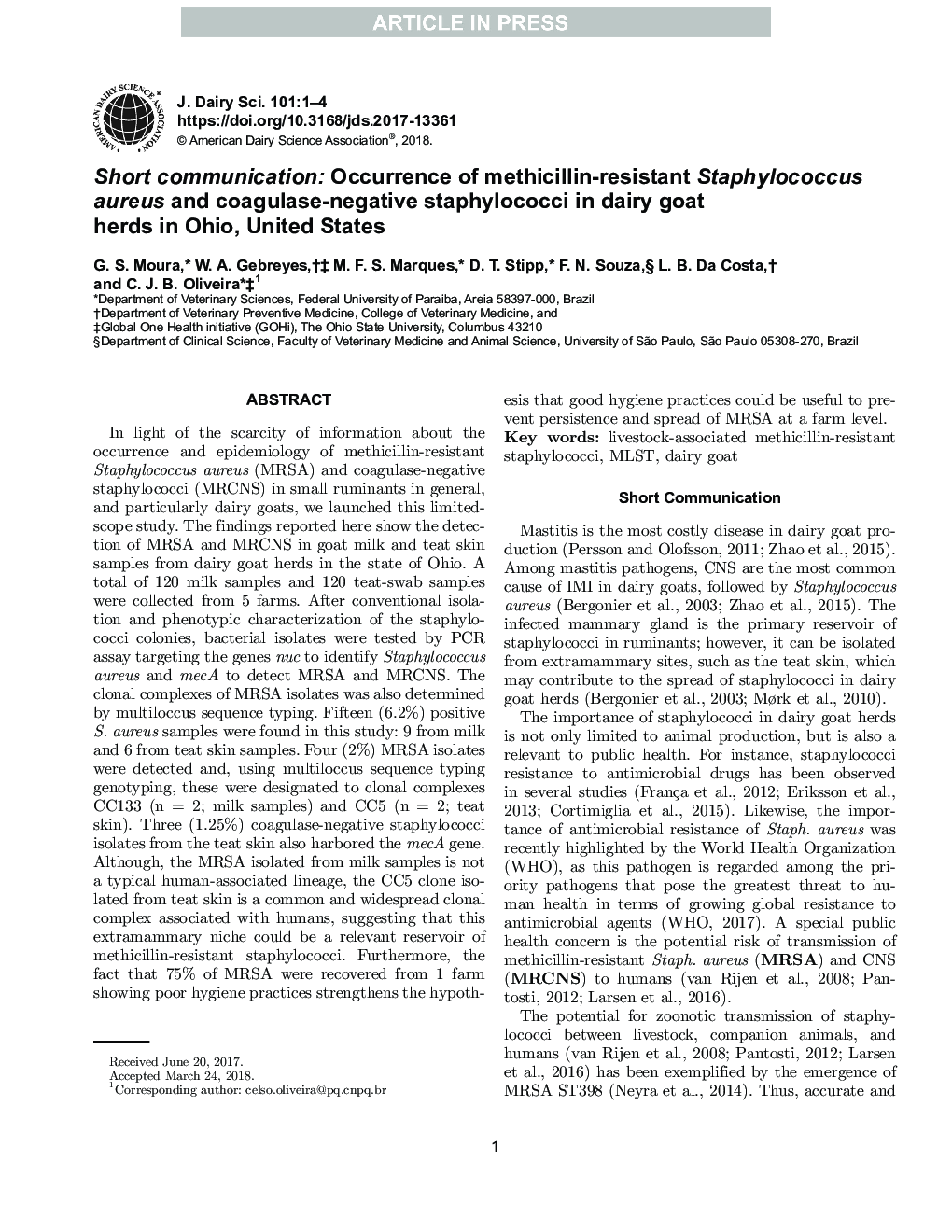| کد مقاله | کد نشریه | سال انتشار | مقاله انگلیسی | نسخه تمام متن |
|---|---|---|---|---|
| 8956443 | 1646155 | 2018 | 4 صفحه PDF | دانلود رایگان |
عنوان انگلیسی مقاله ISI
Short communication: Occurrence of methicillin-resistant Staphylococcus aureus and coagulase-negative staphylococci in dairy goat herds in Ohio, United States
ترجمه فارسی عنوان
ارتباط کوتاه: ظهور استافیلوکوک اورئوس مقاوم به متسییلین و استافیلوکوک های منفی کافاولاز منفی در گاو بز های شیری در اوهایو، ایالات متحده
دانلود مقاله + سفارش ترجمه
دانلود مقاله ISI انگلیسی
رایگان برای ایرانیان
کلمات کلیدی
موضوعات مرتبط
علوم زیستی و بیوفناوری
علوم کشاورزی و بیولوژیک
علوم دامی و جانورشناسی
چکیده انگلیسی
In light of the scarcity of information about the occurrence and epidemiology of methicillin-resistant Staphylococcus aureus (MRSA) and coagulase-negative staphylococci (MRCNS) in small ruminants in general, and particularly dairy goats, we launched this limited-scope study. The findings reported here show the detection of MRSA and MRCNS in goat milk and teat skin samples from dairy goat herds in the state of Ohio. A total of 120 milk samples and 120 teat-swab samples were collected from 5 farms. After conventional isolation and phenotypic characterization of the staphylococci colonies, bacterial isolates were tested by PCR assay targeting the genes nuc to identify Staphylococcus aureus and mecA to detect MRSA and MRCNS. The clonal complexes of MRSA isolates was also determined by multiloccus sequence typing. Fifteen (6.2%) positive S. aureus samples were found in this study: 9 from milk and 6 from teat skin samples. Four (2%) MRSA isolates were detected and, using multiloccus sequence typing genotyping, these were designated to clonal complexes CC133 (n = 2; milk samples) and CC5 (n = 2; teat skin). Three (1.25%) coagulase-negative staphylococci isolates from the teat skin also harbored the mecA gene. Although, the MRSA isolated from milk samples is not a typical human-associated lineage, the CC5 clone isolated from teat skin is a common and widespread clonal complex associated with humans, suggesting that this extramammary niche could be a relevant reservoir of methicillin-resistant staphylococci. Furthermore, the fact that 75% of MRSA were recovered from 1 farm showing poor hygiene practices strengthens the hypothesis that good hygiene practices could be useful to prevent persistence and spread of MRSA at a farm level.
ناشر
Database: Elsevier - ScienceDirect (ساینس دایرکت)
Journal: Journal of Dairy Science - Volume 101, Issue 9, September 2018, Pages 7804-7807
Journal: Journal of Dairy Science - Volume 101, Issue 9, September 2018, Pages 7804-7807
نویسندگان
G.S. Moura, W.A. Gebreyes, M.F.S. Marques, D.T. Stipp, F.N. Souza, L.B. Da Costa, C.J.B. Oliveira,
